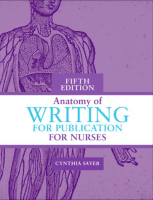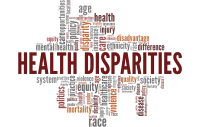NURSE FATIGUE may seem inevitable in many healthcare environments, with a portion of registered nurses (RNs) consistently working past their normal shifts—jeopardizing their own health and potentially crossing the line between safe and unsafe care.
Addressing fatigue is particularly relevant as the American Nurses Association (ANA) continues its yearlong campaign to help nurses achieve a culture of safety in their work settings. The theme of the campaign, Safety 360 Taking Responsibility Together, also reinforces the overarching message of a 2014 ANA position statement that calls for RNs and their employers to work collaboratively to reduce the risks of nurse fatigue and sleepiness associated with shiftwork and long hours.
By definition, nursing care is an around-the-clock requirement, but how we’ve divided those 24 hours has changed over time. When I was a critical-care staff nurse, I worked both 8- and 12-hour shifts and saw the benefits of each. Nursing staff were vigilant to ensure everyone got rest and meal breaks and completed their work on time. In recent interactions with nurses as ANA president, I’ve talked with those who say they can manage their workload efficiently and would never give up their 12-hour shifts. However, I’m also aware of evidence revealing that others often work past their shifts and get no downtime, which exacerbates fatigue. Of the 9,506 nurses who responded to ANA’s ongoing Health Risk Appraisal between October 2013 and January 2016, 57% reported working through breaks to complete their assigned workload and close to 60% came in early or stayed late.
A large study conducted in 12 European countries by Linda Aiken, PhD, RN, FAAN, and colleagues, published last year in the British Medical Journal, concluded that shifts lasting 12 hours or longer can cause nurse burnout and other adverse outcomes and, in turn, pose safety risks for patients. In a study led by Alison Trinkoff, ScD, RN, FAAN, published in Nursing Research in 2011, patient mortality was higher when nurses worked long hours or didn’t have enough time away from work. It’s our responsibility to align our work practices to the evidence.
ANA’s position statement “Addressing Nurse Fatigue to Promote Safety and Health: Joint Responsibility of Registered Nurses and Employers to Reduce Risk” outlines many strategies, including limiting shifts to 12 hours or less a day and reducing the number of hours worked in a week to 40 or less. (For ANA resources on fatigue, including a new webinar on the effects of shiftwork, visit www.nursingworld.org/fatigue.)
Knowing nurses’ reluctance to abandon 12-hour shifts, what can we do to help all nurses manage their workloads effectively within those hours? Solutions include:
• raising our advocacy to ensure optimal staffing on all units and calling on all employers to implement safe staffing and policies that support rest breaks
• getting peers to commit to the shared value of promoting breaks
• helping nurses overcome their reluctance to having others cover their patients temporarily
• mentoring less-experienced nurses to achieve better time management
• creating a plan in which nurse managers and other clinicians can more easily lend a hand when needed.
If you have other models that work, please share them with ANA at healthy.work@ana.org.
I also urge all nurses to be assertive about their schedules by making sure they have enough downtime between shifts, working with peers and managers to ensure scheduling rules are followed, and speaking up when fatigue and scheduling are jeopardizing the health and safety of themselves and their patients. Working past your shift should be reserved for emergencies.
If we cannot successfully contain work within 12 hours, it may be time to develop alternatives that are evidence-based, will reduce RN fatigue, and promote safe patient care. Whatever the ideal number of hours may be, nurses and healthcare organizations must work collaboratively to find a solution that leaves no one at risk.


















